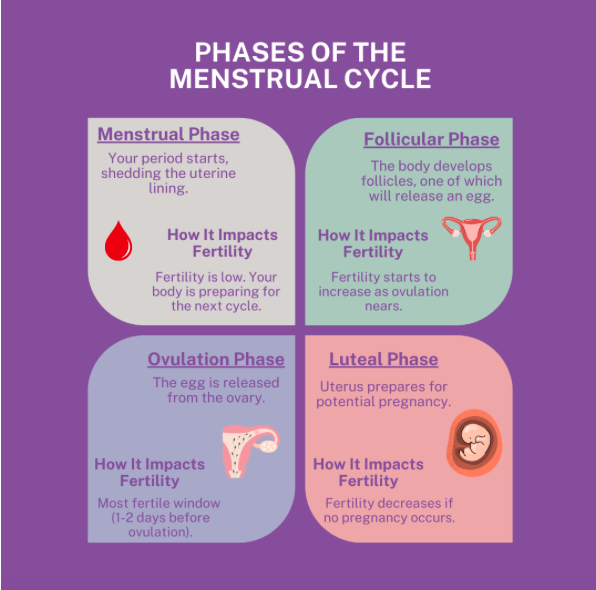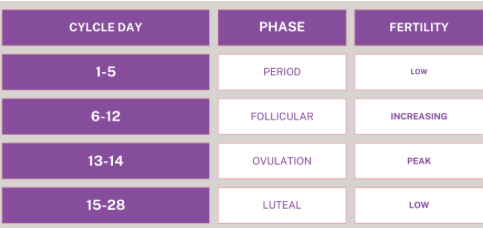The Ultimate Guide to Cycle Tracking for Fertility
When trying to conceive, understanding your menstrual cycle is essential - and empowering. Cycle tracking not only helps you identify your most fertile days but also provides valuable insights into your overall reproductive health. Whether you’re just starting your fertility journey or exploring ways to boost your chances, here’s everything you need to know about cycle tracking:
Why Cycle Tracking Matters
By tracking your cycle, you can:
- Pinpoint ovulation, your most fertile window.
- Understand your cycle length and identify any irregularities.
- Feel more in control of your fertility journey.
For those exploring fertility treatments like IUI or IVF, accurate cycle tracking can also help your fertility specialist better tailor your care.
Phases of the Menstrual Cycle
Understanding the four phases of your cycle is key to effective tracking. Here’s a quick breakdown:

How to Track Your Cycle
- Track Your Period Start by recording the first day of your period (cycle day 1) and how long it lasts. When tracked over a few months, this helps you understand your cycle length, which typically ranges from 21 to 35 days.
- Monitor Ovulation
Basal Body Temperature (BBT): Take your temperature daily before getting out of bed. A slight increase (about 0.5°F) signals ovulation has occurred.
Ovulation Predictor Kits (OPKs): These test for luteinizing hormone (LH), which surges before ovulation.
Cervical Mucus: Fertile mucus is clear, stretchy, and egg-white-like. This indicates ovulation is near. - Chart Your Symptoms Record symptoms like mood changes, cramps, or breast tenderness. These can signal hormone shifts throughout your cycle.
- Use a Cycle Tracking App Apps like Clue, Flo, or Glow make it easier to track your cycle and predict ovulation. Combine this with physical signs for more accuracy.
How to Identify Your Fertile Window
Your fertile window is typically 5 days before ovulation and the day of ovulation itself. Sperm can survive in the reproductive tract for up to 5 days, making this a crucial time to try to conceive.
Illustrative Graph of a 28-Day Cycle

When to Seek Help
If you’ve been tracking your cycle and trying to conceive for over a year (or six months if you’re over 35) without success, we recommend consulting a fertility specialist. Conditions like PCOS, irregular cycles, or endometriosis can make tracking less predictable and might require additional support.
At Aspire Fertility, our team is here to guide you every step of the way. From understanding your cycle to exploring personalized treatment options, we’re committed to your journey.
Final Thoughts
Cycle tracking is a simple yet powerful way to take control of your fertility journey. By learning your body’s unique patterns and combining them with expert care, you can maximize your chances of conception. Whether you’re just starting out or seeking additional help, tools like apps, OPKs, and professional guidance can make all the difference.
Start your journey today—because knowledge is the first step toward success. 🌸


















